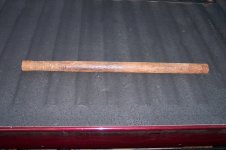I was taught or told by others in the late 50's..60's while HD trucking to always check pressure cold. Then later in the car and truck repair and sales,, check the tires cold.. even by a Goodyear Tire Engineer in 1972,,(another story).
If the tires are checked cold and truck empty and then you load the truck,, you might see a very small increase. On the airbags (riderights or what ever) checked before loading (10psi) the trailer on the hitch... hitch it up and I have about 30psi. But the reason you see so much difference in increase in pressure from tire to airbag is the amount of volume difference. Stop and think,,, put 5000# on 1 cubic foot of space (airbag) against 5000# on 10 cubic feet of space, (tire). Which is going to show more pressure increase? I always check cold... and may stop checking completely.
Did you ever notice.. every time someone has a blowout that it is always said,,, "I checked pressure just before I departed",,, or "pressure was checked yesterday",,,"had them checked 15 minutes ago",,, no I am not pointing fingers at anyone. But it happened to me a couple of weeks ago...I checked both front tires because they looked low,,, truck was in dirt and both had between 65--70#.... Truck had been setting 3 days.... drove it 10 miles, with no load..not over 70mph...temp about 95*,,, stopped,, got out and walked around the front and was just beside the right front tire when it EXPLODED. I mean it actually blew up,, right across the tread area,,, not sidewall. The amazing thing is there was none,, not any.. indication of a bad tire like shimmy,,, vibration,, or anything like that and when I checked the tire before I departed I did not see any sign of bubble or cracks on the outside or tread area that was visible. This tire was a Michelin XPS,,,maybe 20K miles on it,, no unusual wear. Now we did travel some pretty bad roads on the way to Goshen this year and had some really bad pavement holes... I am thinking the tire was damaged by this.. but was so surprised at the fact no visible damage, no feel of damage in driving and no loss of air pressure prior to the blowout. Just glad I was not on the road with the 5er hooked up. Ohh,,, Yea ,,Good Sam Road service...I was on the phone 1:30 min..G/S was looking for service... finally,, service man came from about 500 feet away...total time about 2 hours.
So,,, it looks to me like if you check your tires... watch out for a blowout.... I have a couple of air gauges I think I will give away.


